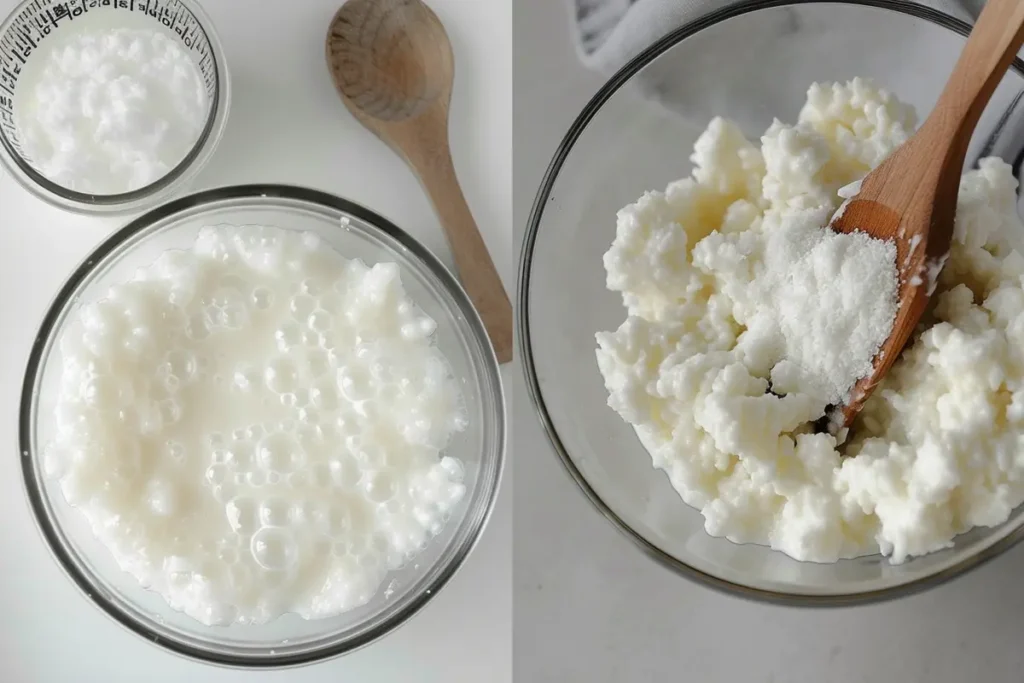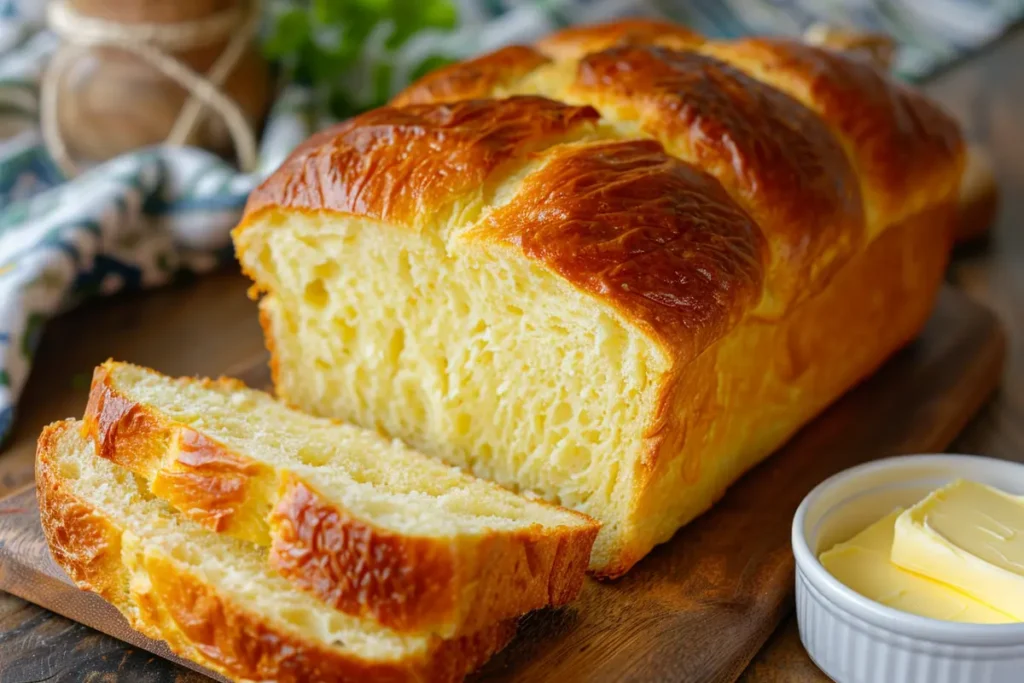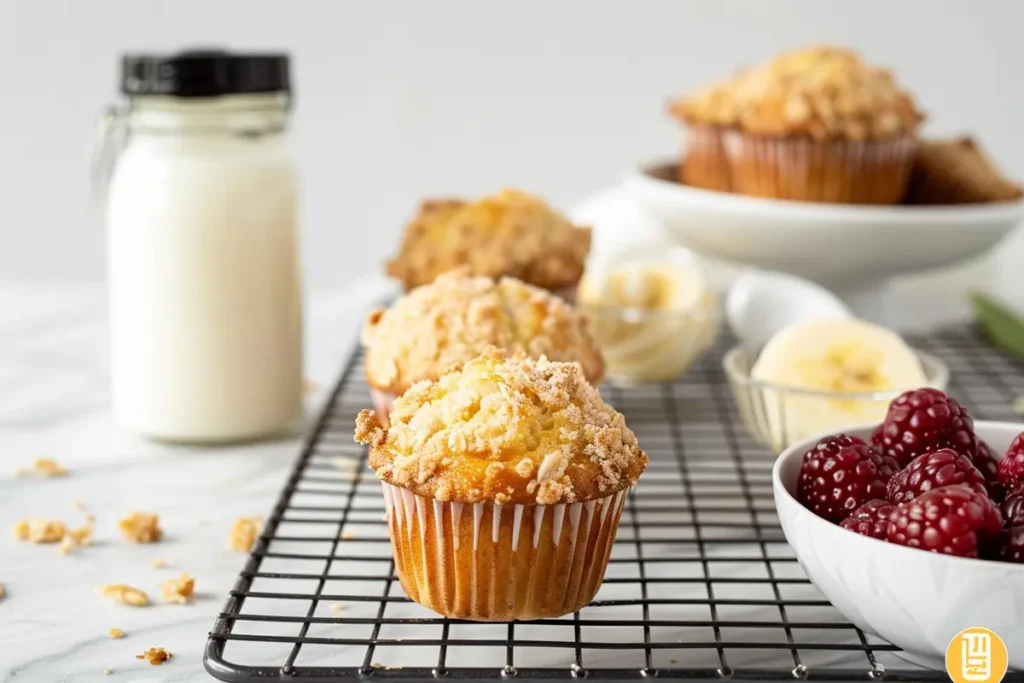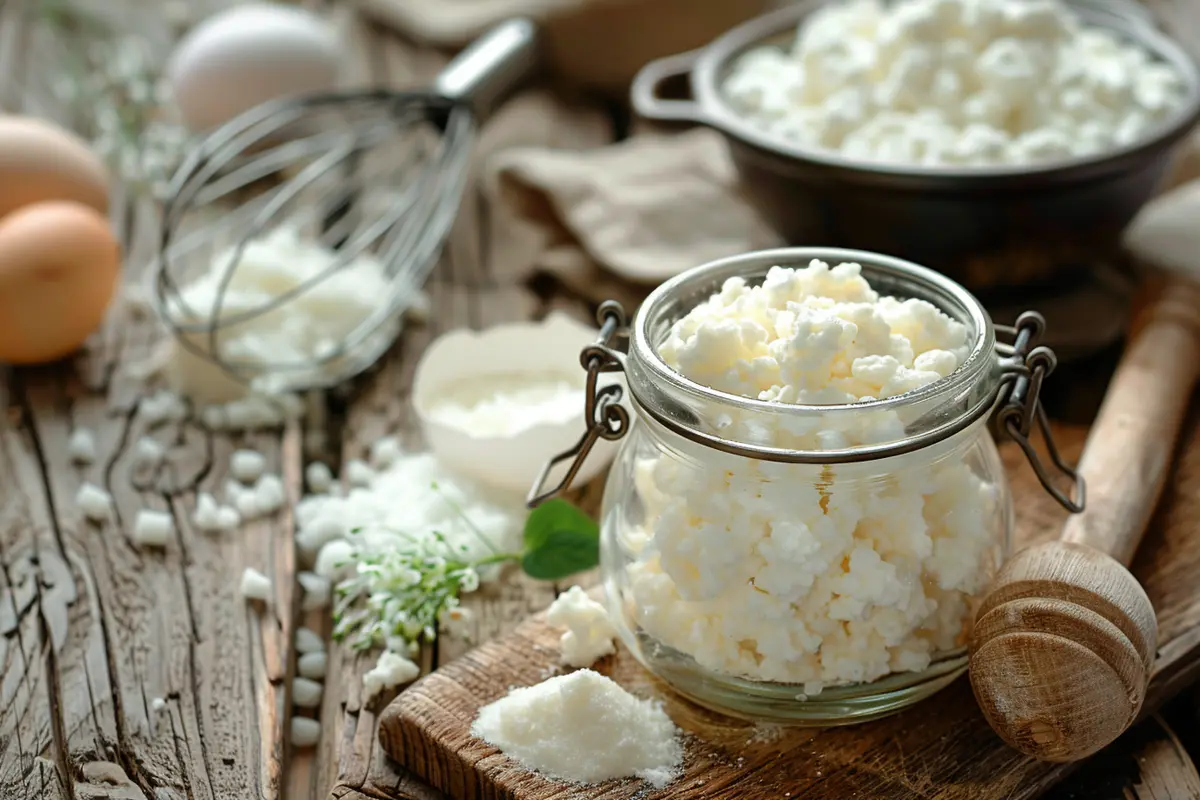Kefir, a fermented dairy product, has been gaining traction in the culinary world for its unique properties and versatility. It’s not just a drink—it’s a baking powerhouse that enhances the flavor, texture, and health benefits of baked goods. Whether you’re a seasoned baker or a curious beginner, understanding what kefir does in baking will open a world of possibilities. In this article, we’ll explore the science behind kefir, its applications in baking, and why it’s quickly becoming a must-have ingredient in every baker’s pantry.
Understanding Kefir
What is Kefir?
Kefir is a fermented milk product made by combining milk with kefir grains, a symbiotic culture of bacteria and yeast. Unlike yogurt, kefir has a thinner consistency and a tangier taste, making it an excellent addition to both savory and sweet recipes.
Its probiotic-rich profile is what sets kefir apart. These beneficial bacteria not only support gut health but also bring an extra layer of complexity to the flavors of baked goods.
The Fermentation Process
The magic of kefir lies in fermentation. When kefir grains are introduced to milk, they break down lactose into lactic acid, giving kefir its signature tang. This process also releases carbon dioxide, making it a natural leavening agent.
In baking, the fermentation process is a game-changer. The acidity of kefir interacts with baking soda or powder to create air pockets, resulting in lighter, fluffier textures. This chemical reaction is why kefir is such a powerful ingredient in bread, cakes, and muffins.
Nutritional Profile of Kefir
Kefir isn’t just delicious—it’s packed with nutrients. Here’s a quick snapshot of its benefits:
- Probiotics: Supports gut health and aids digestion.
- Calcium and Vitamin D: Strengthens bones and teeth.
- Protein: Provides a boost of essential amino acids.
- B Vitamins: Enhances energy production and promotes overall well-being.
What makes kefir truly special is its ability to retain much of its nutritional value even after being baked. This means you can enjoy probiotic benefits in every bite of your favorite baked treat.
Kefir’s Role in Baking
A Natural Leavening Agent

One of the standout qualities of kefir is its ability to act as a natural leavening agent. When combined with baking soda or baking powder, kefir’s acidity triggers a chemical reaction that releases carbon dioxide. This process creates tiny bubbles in the batter or dough, resulting in baked goods that are light, airy, and perfectly risen.
This natural leavening is especially beneficial for recipes like pancakes, muffins, and quick breads. The result? A fluffy texture without the need for artificial additives or excessive amounts of yeast.
Enhancing Flavor Profiles
Kefir doesn’t just improve texture—it’s a flavor enhancer too. The subtle tanginess of kefir balances out sweetness in desserts, making flavors more vibrant and well-rounded. In savory recipes, kefir adds a depth of flavor that’s both refreshing and unique.
For example, in a chocolate cake, the acidity of kefir intensifies the cocoa’s richness, while in a loaf of bread, it imparts a slight tang that complements earthy grains. It’s the secret ingredient that elevates the overall taste of baked goods.
Kefir’s tangy flavor is a game-changer for desserts. Try it in our kefir sheet cake recipe for a perfect example of how it balances sweetness.
Improving Texture and Moisture
Ever had a cake that was dry and crumbly? Kefir solves that problem effortlessly. Its creamy consistency adds moisture to batters and doughs, resulting in baked goods that are soft, tender, and never dry.
The proteins and fats in kefir contribute to a luscious texture, while its natural acidity helps break down gluten strands, ensuring baked goods stay moist longer. From cookies to scones, kefir is the ultimate ingredient for achieving that perfect bite.
Substituting Kefir in Recipes
Replacing Buttermilk and Yogurt
One of kefir’s greatest strengths is its versatility as a substitute for other dairy products. If you’re out of buttermilk or yogurt, kefir can step in seamlessly. Its acidity and tanginess are similar to buttermilk, making it a 1:1 replacement in recipes like pancakes, biscuits, or cakes.
For yogurt, kefir works just as well, though its thinner consistency may require slight adjustments. If a recipe calls for thick yogurt, consider reducing the liquid content slightly or using a thickened kefir variety to maintain the right texture.
Kefir’s ability to replace these staples not only saves time but also enhances the nutritional value of your baked goods, thanks to its probiotic and nutrient-rich profile.
Using Kefir in Dairy-Free Baking
Surprisingly, kefir isn’t limited to dairy-based recipes. Non-dairy kefir options, like those made from coconut or almond milk, work wonderfully for those with lactose intolerance or dietary restrictions. These plant-based kefirs retain the tangy flavor and probiotic benefits of traditional kefir, ensuring that no one has to miss out on its magic in baking.
When using non-dairy kefir, ensure it’s unsweetened to avoid altering the recipe’s intended sweetness. You’ll enjoy the same light texture, moist crumb, and rich flavor, all without the need for dairy.
Health Benefits of Baking with Kefir
Probiotic Retention After Baking
One question often asked is whether kefir’s probiotics survive the baking process. While high temperatures can kill some bacteria, many of kefir’s beneficial compounds remain intact. The fermentation process enriches kefir with enzymes and acids that continue to offer nutritional benefits even after baking.
Even if the live probiotics are reduced, baked goods made with kefir still carry a higher nutritional value than those made with traditional dairy or water. This makes kefir an excellent choice for creating healthier, more nutrient-dense desserts and breads.
Nutritional Advantages
Baking with kefir doesn’t just enhance the flavor and texture of your treats—it also adds a boost of nutrients. Here are some highlights:
- Calcium and Magnesium: Promotes bone health and supports muscle function.
- Protein: Helps repair tissues and builds muscle, making your baked goods more filling.
- B Vitamins: Provides a natural energy boost and supports brain function.
- Low Lactose Content: Kefir’s fermentation process significantly reduces lactose, making it easier to digest for those with sensitivities.
By incorporating kefir into your recipes, you’re not just indulging in delicious baked goods—you’re making a choice that’s good for your body too.
Practical Applications of Kefir in Baking
Breads and Doughs

Kefir is a superstar when it comes to breads and dough-based recipes. Its natural acidity helps condition gluten, making the dough easier to handle and resulting in soft, chewy bread with a crisp crust. Whether it’s artisan sourdough, sandwich bread, or dinner rolls, kefir lends a subtle tang and enhances the texture.
In flatbreads like naan or pita, kefir can act as a tenderizing agent, giving the bread a pillowy softness. Its probiotic properties also interact with yeast to create more complex flavors, making your homemade breads bakery-quality.
Cakes and Muffins

When used in cakes and muffins, kefir transforms the batter into a silky, smooth mixture that bakes up into fluffy and moist treats. Its tanginess balances the sweetness, especially in desserts like chocolate cake, carrot cake, or blueberry muffins.
The moisture-retaining properties of kefir also mean these baked goods stay fresh longer, which is ideal for meal prep or entertaining. And if you’re experimenting with healthier flours like whole wheat or almond flour, kefir prevents the denser texture often associated with these options.
Pancakes and Waffles
If you love light, airy pancakes or crispy waffles, kefir is your go-to ingredient. Its acidity works wonders with baking soda, creating bubbles that lead to a perfectly fluffy texture.
For a simple upgrade, try replacing the milk or buttermilk in your favorite pancake or waffle recipe with kefir. The result is a breakfast dish that’s not only delicious but also packed with probiotics and nutrients.
Tips for Baking with Kefir
Adjusting Liquid Ratios
Because kefir is thinner than some other dairy products, you may need to adjust your liquid ratios slightly in recipes. If the batter feels too runny, add a tablespoon of flour at a time until it reaches the desired consistency.
Conversely, if the batter is too thick, a splash of extra kefir can bring it to the right texture. The key is to balance the wet and dry ingredients without overmixing, which could make your baked goods dense.
Flavor Pairings
Kefir’s tangy flavor pairs beautifully with a variety of ingredients, enhancing both sweet and savory recipes. Here are some ideas:
- Sweet Pairings: Chocolate, vanilla, citrus, berries, cinnamon, and honey all complement kefir’s unique taste.
- Savory Pairings: Herbs like dill or parsley, cheese, garlic, and even smoked ingredients work well with kefir-based breads or pastries.
Experimenting with different flavor combinations can take your recipes to the next level, making every bake a new adventure.
Frequently Asked Questions
Can kefir be used as a leavening agent?
Yes, kefir works wonderfully as a natural leavening agent. Its acidity reacts with baking soda or powder, producing carbon dioxide bubbles that lighten and aerate batters or doughs. This chemical reaction is why pancakes, muffins, and cakes made with kefir turn out so fluffy and soft.
Does baking with kefir kill its probiotics?
While the high heat of baking may reduce the number of live probiotics, many of kefir’s benefits remain intact. The enzymes, vitamins, and minerals in kefir contribute to the nutritional value of baked goods, even if some probiotics are lost. For recipes that retain more live cultures, consider adding kefir in no-bake desserts or frostings.
How does kefir affect the texture of baked goods?
Kefir dramatically improves the texture of baked goods by adding moisture and tenderness. Its proteins interact with the flour, while its acidity softens gluten strands, resulting in a crumb that’s light, delicate, and moist. From cookies to bread, kefir ensures every bite is a treat.
Can kefir replace milk in baking?
Absolutely! Kefir is an excellent substitute for milk in baking. It adds a tangy flavor and enhances the texture of recipes. Keep in mind that kefir is more acidic than milk, so it may alter the flavor slightly, but in a delicious way.
What are some recipes that use kefir in baking?
There’s no shortage of recipes where kefir can shine. Some popular options include:
- Kefir pancakes and waffles
- Blueberry muffins with kefir
- Chocolate or carrot cakes
- Artisan bread and dinner rolls
- Scones and biscuits
Wondering about replacing yogurt with kefir in your baking? Check out our guide Can I use kefir instead of yogurt in cake? to learn how to do it right.
Kefir is versatile enough to be used in nearly any baked good that calls for a dairy component.
Conclusion
Baking with kefir is more than just a culinary trend—it’s a way to elevate your recipes with improved flavor, texture, and health benefits. Whether you’re making fluffy pancakes, moist cakes, or tender breads, kefir delivers on every front.
Not only does it act as a natural leavening agent, but it also enhances the moisture and tanginess of baked goods, all while adding a boost of nutrients. Its versatility allows you to replace common dairy ingredients like buttermilk or yogurt, making it a valuable staple in your kitchen.
By incorporating kefir into your baking, you’re not just following a recipe—you’re embracing a time-honored ingredient that brings both tradition and innovation to your table. So grab that bottle of kefir, preheat your oven, and let your baking journey begin!

